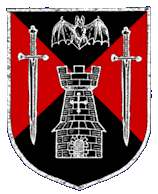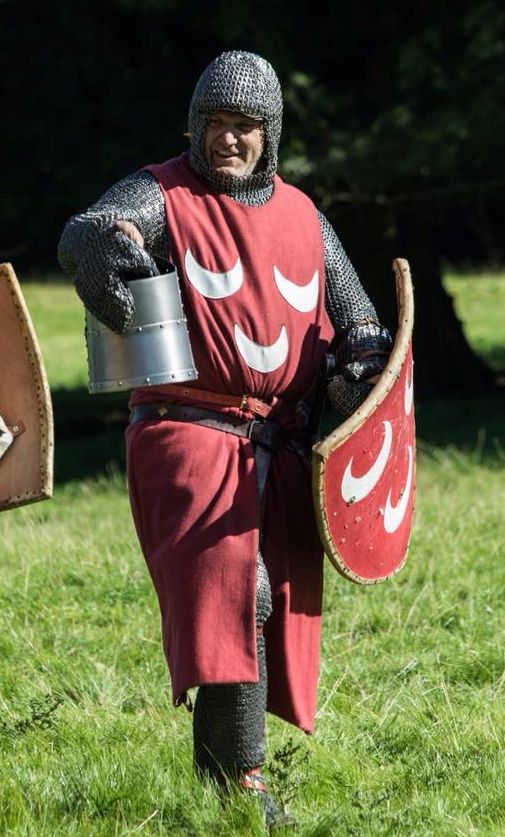Link to the other pages:
-
Knight Hospitaller
The current project is to depict a 12th century or late 13th century knight hospitaller.
Here are a couple of picture of my work in progress (the helmet and shields is not correct for the 12th centiry period).


Under construction - Better picture of my Knight Hospitaller attire will appear here.
Perfomed at Medieval Mischief, Newcastle upon Tyne, June 2017.
- Maille Chausses
In the 13th century, legs were protected by maille chausses as they were exposed to injury when fighting on horseback:
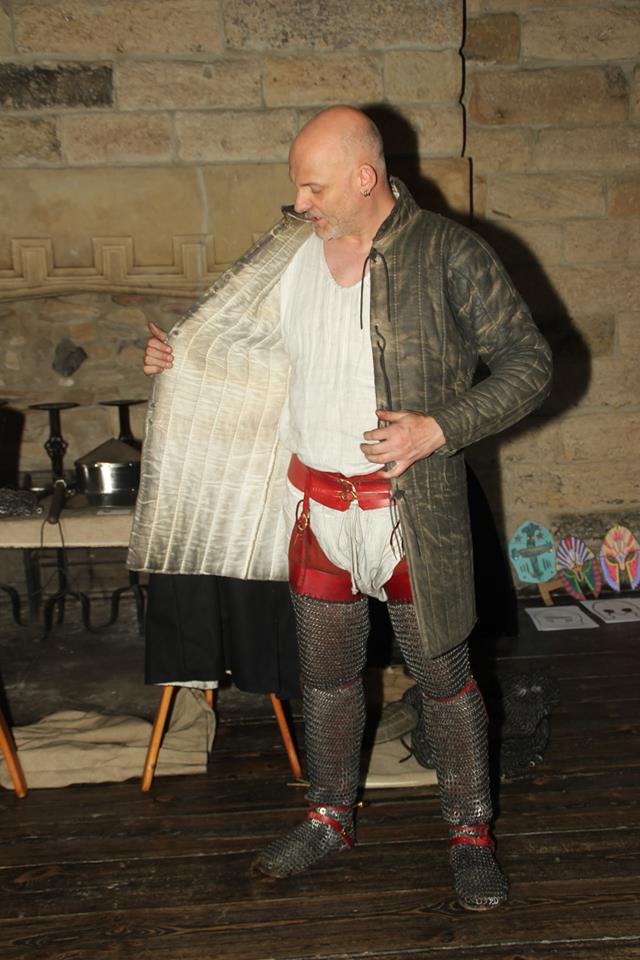
The attachment depicted here are only a possible method that could be used. I am not aware of any historical depiction of the suspension method actually used, either in manuscripts or in effigies. A method based on a padded belt and using laces is also possible.
The knee and ankles were secured with straps to help distribute weight and prevent the maille from slidding and moving while walking.
- Gambeson
The gambeson (or aketon) did not need to be as padded under a maille hauberk as it would need to be for foot soldiers who would only use it for protection:
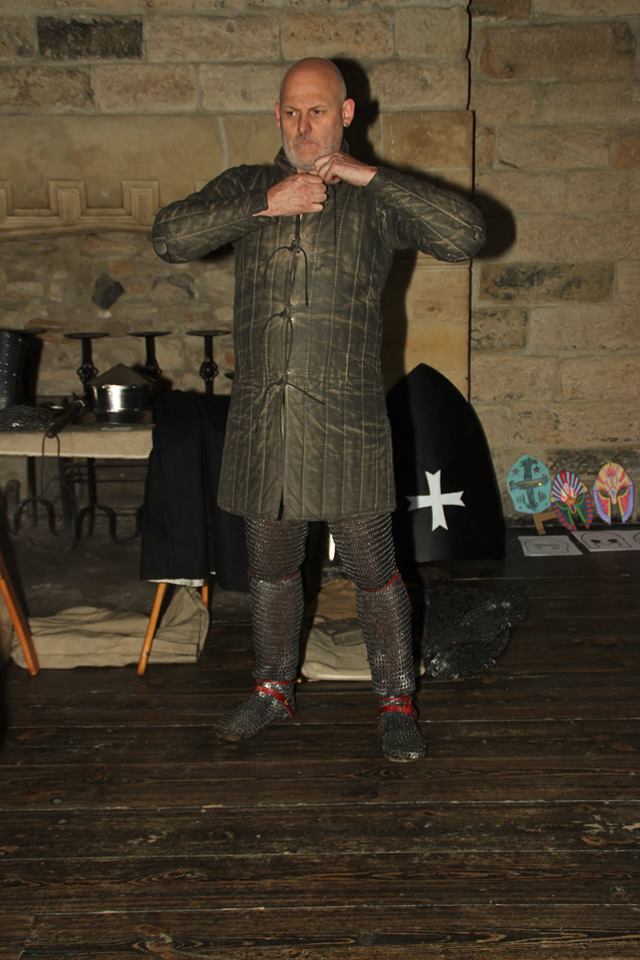
The maille hauberk that is worn above the gambeson is an effective protection against cuts (e.g. sword strikes) but so so much against blunt force trauma (broken bones) as delivered by maces for example. The gambeson with its padding helps protect against these types of injuries.
In the 13th century, gambesons were not open at the front, they were in essence built like t-shirts. This is a small anachronism that is used for easier removal in hot weather.
- Maille Hauberk
The maille hauberk (wedge-riveted rings) has long sleeves, integrated mittens but in this case no integrated coiffe:
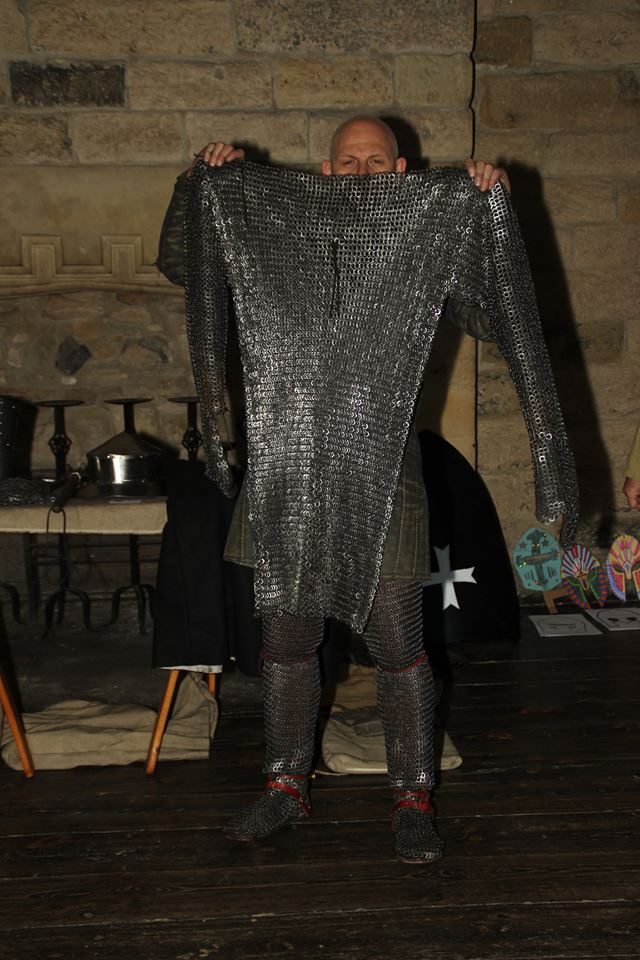
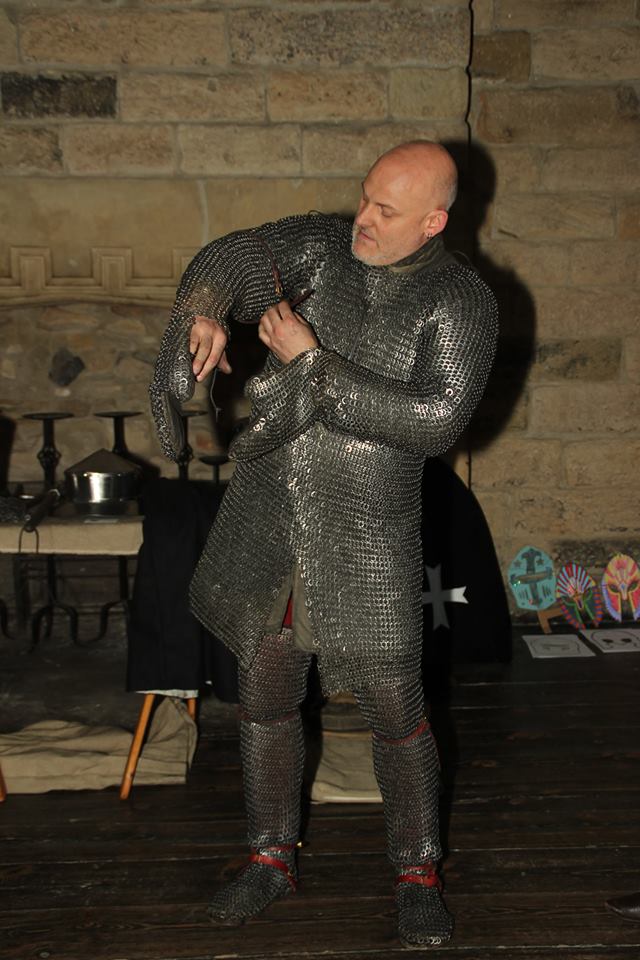
In the 13th century, hauberks either had integrated coiffe or not as suggested by some historical evidence (see Cite D'Antan).
The sleeves of the maille hauberk were secured to the elbow by straps to help distribute weight.
- Arming Cap and Maille Coiffe
The head was protected like the rest of the body, a padded arming cap covered by a maille coiffe:
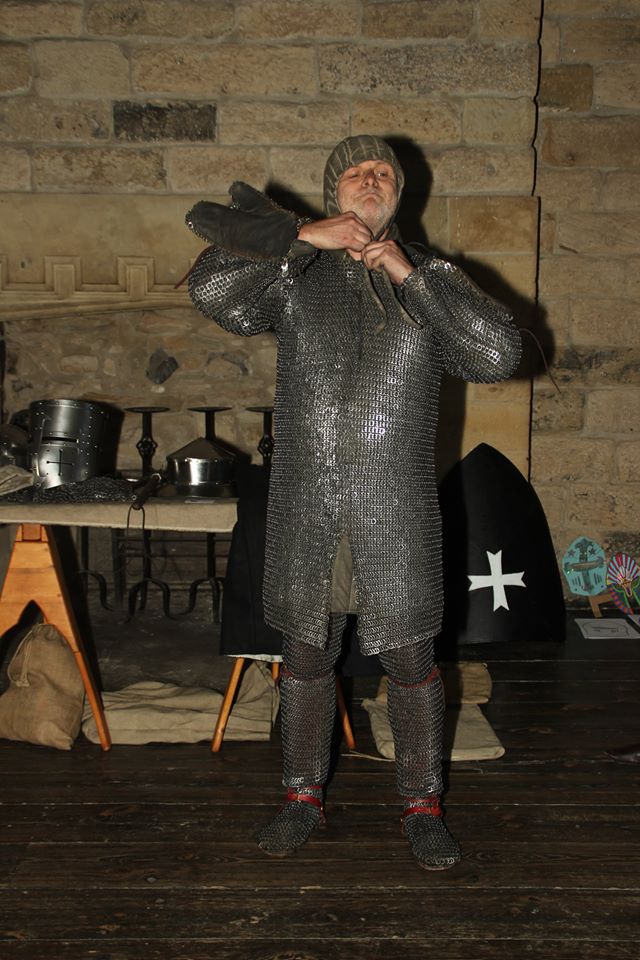
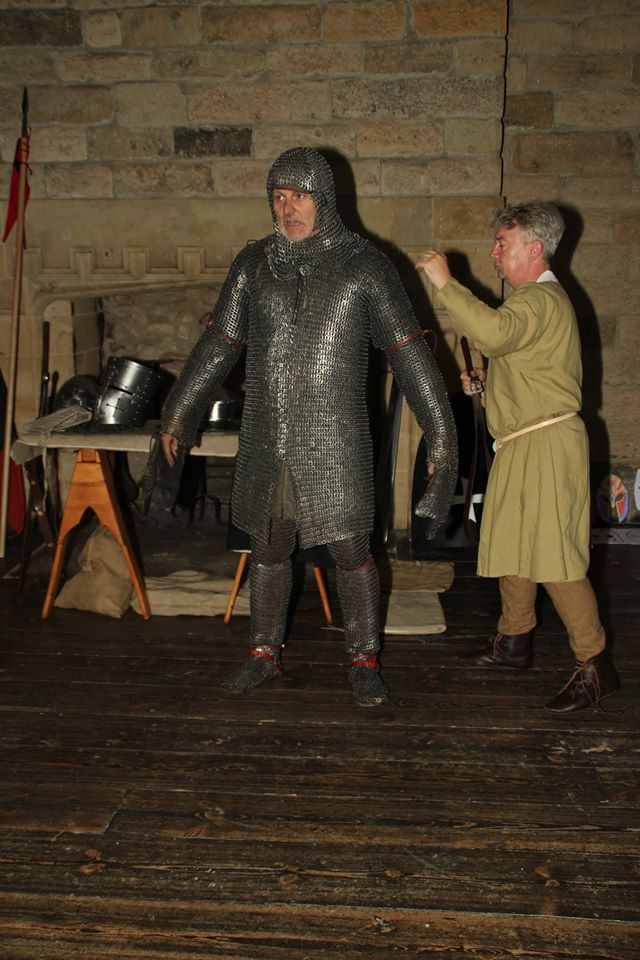
Straps around the head is used to secure the maille coiffe so that it does not slide and cover the eyes while fighting.
- Surcoat
The surcoat is an invention from the middle-East brought back to Europe by crusaders:
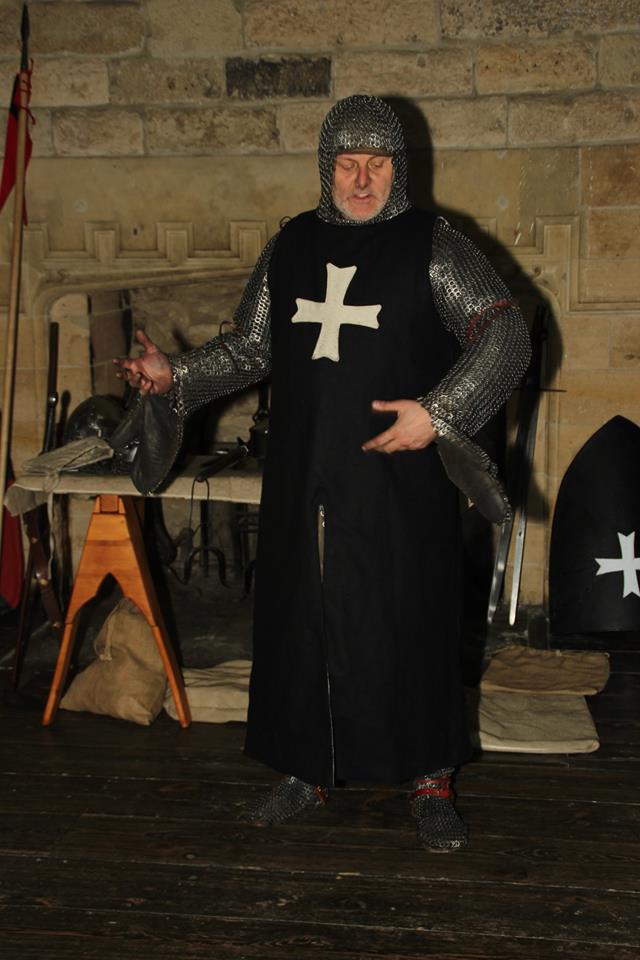
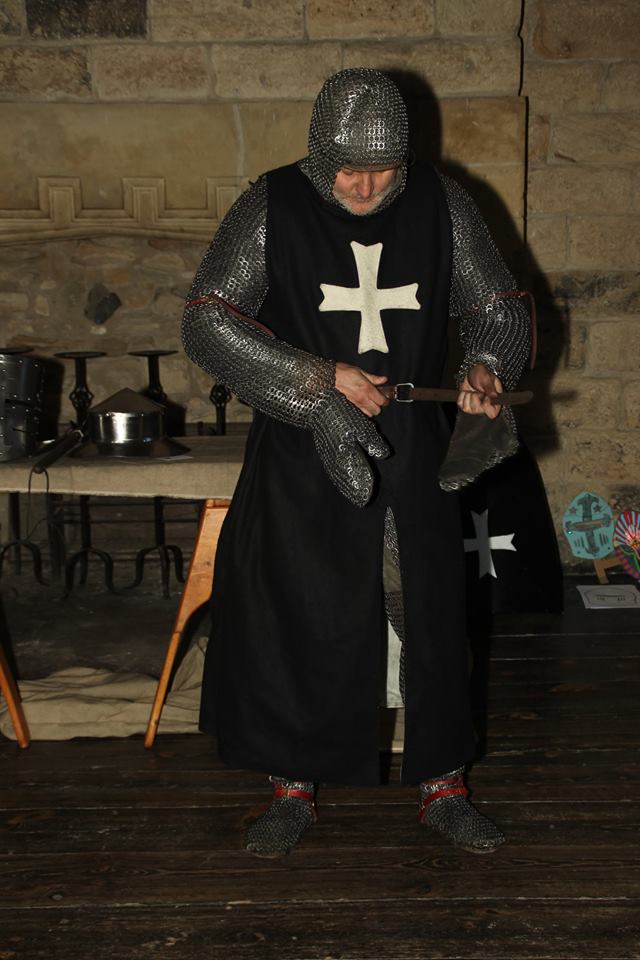
It serves several purposes: 1- Protect against sun and rain, 2- Identify the wearer (since barrel helmets covered the face of the wearer, there was a need to identify who was your enemy and who was your ally).
The belt helps secure the weight of the hauberk between the shoulders and the hips.
It bears the coat of arm of the wearer (in this case the coat of arms of the Hopsitaller order.
- Sword
The sword and a side weapon (dagger) are iconic knightly weapons (but by no mean the only ones used in combat):
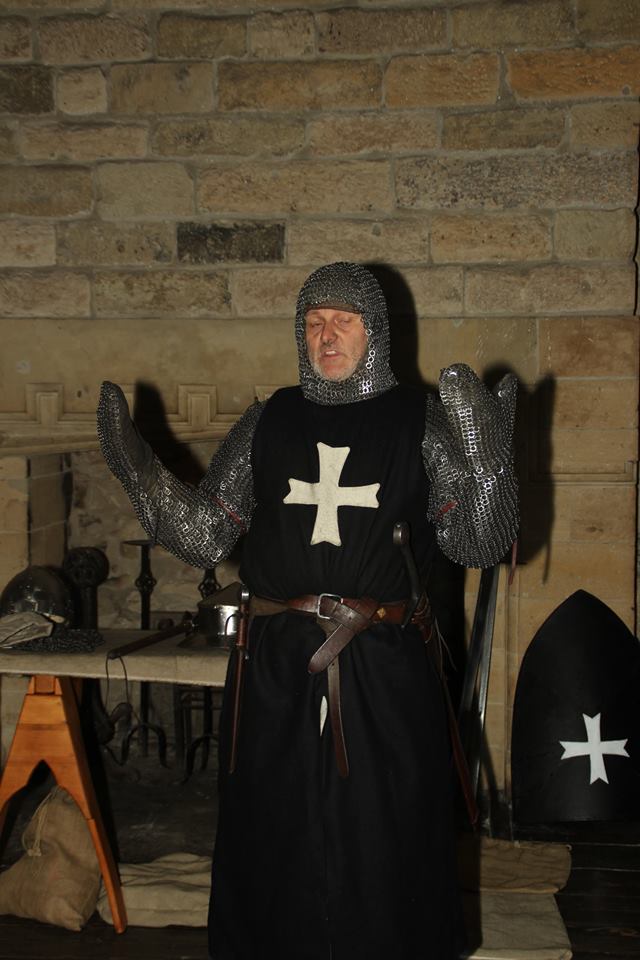
The scabbard serves a very important protective role for the valuable sword. Far too many so-called "re-enactors" use completely historically inaccurate (and frankly silly looking) metal rings to hold the sword!
- Barrel Helmet
The helmet in the 13th century covered the full face and back of the head:
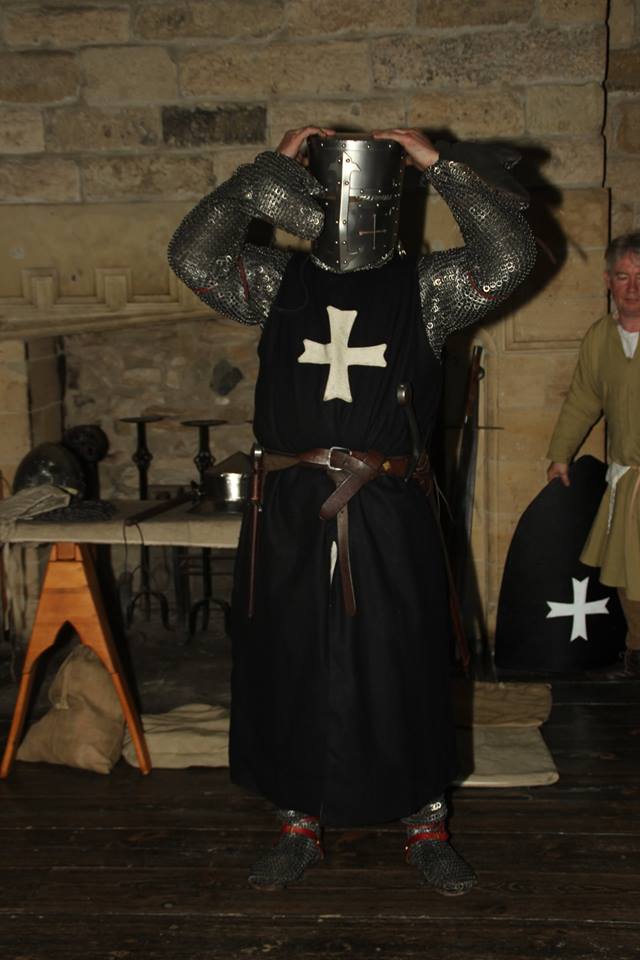
The restricted visibility, breathing and ability to shout orders made it cumbersome. Some knights prefered to use cervelieres (a.k.a. secrets) on top or under the maille coiffe instead. This can be seen on the Maciejowski Bible:
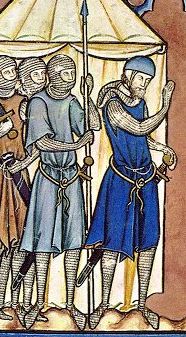
- Shield
The so-called "heater" shield:
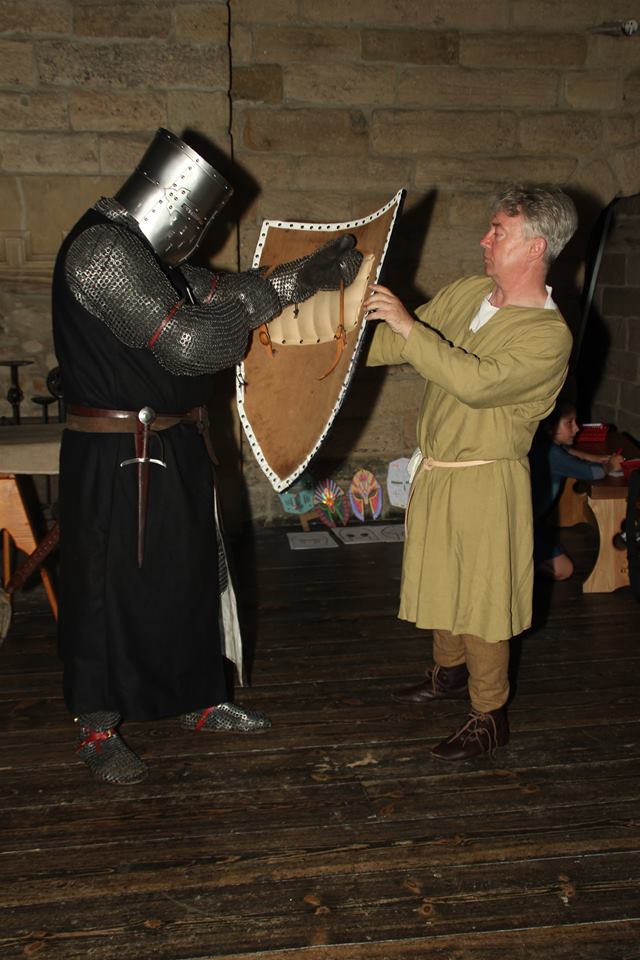
This shield is a shorter version of so-called "kite" shield. It developed as it was easier to use on horseback (being switched from left to right of the horse) while it became less necessary to protect the legs due to the development of the maille chausses.
This one bears the coat of arm of the wearer (in this case the coat of arms of the Hopsitaller order. The Hospitallers were also known to carry shields that had a different heraldic display than the surcoat, i.e. the arget (white) cross on a gules (red) field (see here).
- Ready for Battle
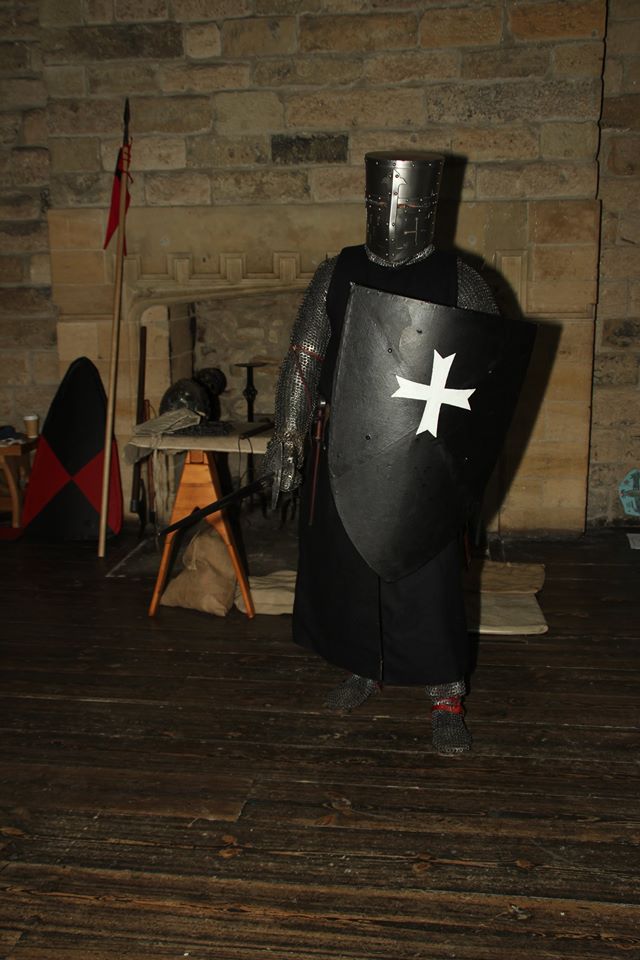
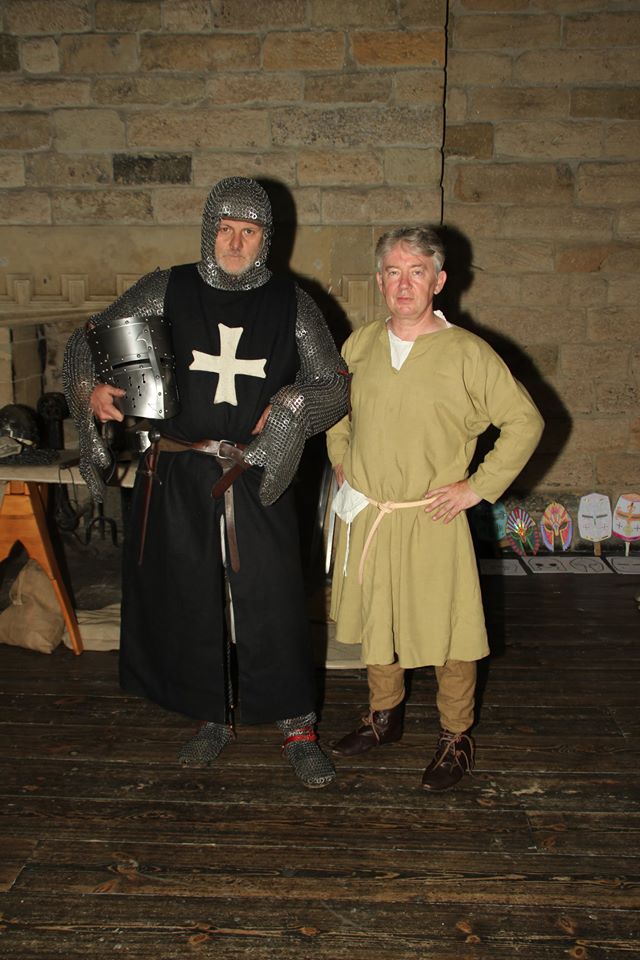
A collection of relevant sources on Pinterest can be found here. The pictures in this Pinterest folder include re-enactors, documentation and historical sources. They will serve as a basis for further research to try and reach a high level of historical accuracy.
Under construction.
